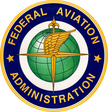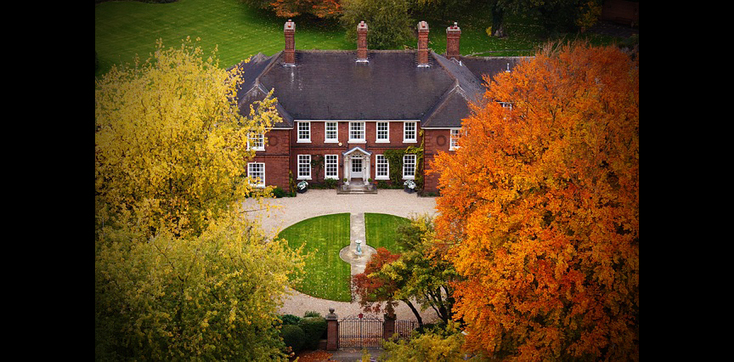Is Drone Photography in Real Estate Legal?

A common situation: A real estate agent purchases a drone, films and photographs properties that they are selling with the drone, and uses that material to try to sell the house. This is illegal. It may sound ridiculous, but it is true. It is also illegal for a 3rd party to provide this same service unless they have an FAA Remote Pilot Certificate. Be wary if your provider does not tell you up front - always ask about it.
One trick many would-be providers try to get away with is offering their drone services for free, while just charging for the editing time. Don't bother; the FAA will see right through this. The FAA can and has taken legal action against violators. If you're still not convinced that illegally using a drone for commercial purposes is risky, consider this: general liability insurance will not cover any damage (to people or property) caused by a drone if the operator is using it illegally. Numerous insurance companies are offering this insurance, but when is the last time an insurance company ever paid out a claim for illegal activity?
The current laws are likely to change within the next few years, but as of now, this is where they stand.
Professional vs Amateur "Aerial Drone Photographers"
- They're probably not legal. Search for their name or their company's name here. If it doesn't show up, they are not legal to provide commercial services. What's more, they may not know the rules pertaining to drone flight restrictions and the reporting requirements for conducting activity within 5 miles of airports.
- Aerial filming is a skill that takes practice. As mentioned, flying a drone is easy to do. But, safely flying a drone while capturing the right shots for the job takes quite a bit of time and effort to master. A single-operator drone requires a perfect balance between watching the drone to avoid obstacles and watching the tablet's screen to make sure the shot is coming out just right. Dual operator drones allow one person to pilot the drone and one person to control the camera, but this requires a team who is perfectly in touch with the others' vision.
- No reputation to back them up. Always ask for some references and past clients. Everyone starts somewhere, but an honest provider will admit that they are new up front. Look for experience working with both small and large companies. For example, our client list includes organizations of all different sizes: Asante, Best Western, City of Medford Parks and Rec, Monrovia, Finigan Real Estate, Brown Contracting, and John L Scott.
- Real Estate-Specific Drone Photography. Our origins are in drone real estate photography, and we've spent hundreds of hours filming and photographing real estate. We've already spent our time discovering, refining, and perfecting the best angles, so we're now very efficient and we're able to keep our prices low.
- MLS. Huh? Many people who advertise aerial drone photography to real estate agents have no idea what the MLS even is, so they will spend all their time (and someone else's money) creating a video that violates the MLS' rules. Ultimately, the video will likely be rejected from the system. We often create two videos: one for the MLS, and one for our client's uses that include their branding.
- They can be dangerous. The FAA requires an airplane pilot's license for commercial drone operation. When training for a pilot's license, an applicant is taught to always be thinking about the "what-if" scenarios, including engine failure and fire. We've seen numerous illegitimate commercial drone operators fly, and sadly most of them do incredibly risky things with their drones.
- Filming Too fast. The first step to creating an effective video is to avoid making the viewer nauseous. Most real estate drone videos on YouTube feature fast camera pivoting and pans, or the camera angle is modified too abruptly. This doesn't look good, it's hard to watch, and if the viewer has any tendencies towards motion sickness, they will turn it off right away. Not only this, but rapid movement skips over details. We offer our clients a no-nausea guarantee.
- Low-Quality Equipment. A good rule of thumb to go by is to ask the provider if his or her equipment can shoot video in 4K resolution. If the answer is yes, odds are the provider at least has the equipment capable of creating something that could look nice. Also make sure they are using a gimbal. Here is a comparison of gimbal vs no gimbal.
- Specialization or Photographer's add-on? It is very advisable to hire someone who specializes solely in aerial drone photography. It is not impossible for a great photographer to become a great drone photographer, but it is not that common. Usually the photographer buys a drone so they can add it to their repertoire of available services, but they never really become good with it. Be sure to ask for samples of their aerial work.
Using Drones for Real Estate Purposes Effectively
- Walk-around tours. This one surprises people. Our walk-around shots are created to give the viewer the experience of touring the property. We fly at eye-level, and we move at speeds that are slow enough for people to take in the details. Most real estate drone videos zoom through everything quickly... but when is the last time a prospective buyer sprinted around the property? The point of this video is to showcase the fine details as if someone was walking around themselves. Our drone is equipped with a stabilization gimbal for the camera, which means that the camera will always remain level and videos will not come out shaky or nauseating. In fact, our drone walk-around videos come out much smoother than those filmed by a conventional camera.
- Aerial Tours. Transitioning from the aforementioned walk-around tour into the air is one of our favorite shots. Large properties will benefit most from aerial tour shots because they often contain different 'sections' and the drone can fly from one section to the other. This is the best way to give the viewer a scope of how large the property is. We've developed a number of great angles and flight patterns that we use in our aerial tour shots.
- Capitalize on Strengths and Selling Points. Each property or home has certain aspects that need to be highlighted through the video. A professional drone photographer will know how to identify these aspects and use the drone to emphasize these. For example, if the size of the home is a main point, we'll include other structures in the frame to contrast it's size against theirs. If the home has an amazing view, we will fly the drone on routes and angles that include the view.
- 4-Axis Movement. Many drone pilots prefer linear movements, i.e. moving in one direction while climbing or descending. But in order to bring the video alive, an experienced pilot will pivot the camera while simultaneously changing the camera's angle - all while the drone is changing direction and climbing or descending. These shots are very challenging, but they are the most rewarding.
- 3-5 Minutes in Length. Too short of a video will not be able to portray the detailed shots, but too long of a video will lose viewer's interest. Sometimes we create a social media video for our clients to share on their feed. These are kept under 45 seconds because data has shown that is the maximum amount of time that most people will stick around.
- No Rooftops. There are far too many real estate drone videos on YouTube that would appear to be selling the roof of a house. Drone pilots seem to have a fascination with their ability to fly over a house, so they will include way too much footage of them flying over the roof in the video.
- Not all houses or properties need it. Sometimes we reach out to agents who are selling a specific property that would truly benefit from aerial photos and videos. They are usually large properties, or really nice houses. However, we've also be hired to film many homes that probably don't need an aerial perspective. For example, a low-income residential home with no backyard and no outstanding features will probably not need an aerial perspective simply because there is very little to see.
- No Fish-eye Lens Distortion. Using a GoPro or an older Phantom-style camera means that images and videos are likely to have lens distortion. This means that the horizon line may be curved. This is definitely something that should be avoided. Before purchasing a drone or camera, make sure it films and photographs without this distortion, and avoid hiring someone who uses a camera that films or photographs that way.
- No Indoor Drone flight. With a few exceptions, if someone offers to fly their drone indoors, this is a sign of inexperience. Besides being risky to the drone and the structure, one quickly learns that flying indoors and capturing smooth footage is nearly impossible because the turbulent air the drone creates circulates within the usually tight confines of the home. Another issue, one that is compounded by the turbulent air, is that the drone's camera will be so close to static objects (walls, tables, etc.) that any slight shift in the drone's position will be magnified in the video.
- Music vs. No Music. We do not typically include music because music tastes vary so much. Subconsciously, the presence of a song that one does not like will actually negatively change their perception of a home or property. It would be a shame for someone to click out of a video and move on to a different property simply because of a song.
Aerial Drone Photography Price

If one wishes to do this themselves, the price of a pilot's license today, depending on the type, can range between $4,000 and $10,000 and can take months to complete. Purchasing a drone able to capture high-quality video and photos will cost, at the very least, almost $1,000 and goes up from there. In most cases, it is worth it just to hire someone else who has completed all of these steps and already has experience with real estate drone photography.
Southern Oregon Drone uses fairly simple pricing. For an average sized local home in Medford, Central Point, Jacksonville, or Phoenix, we charge $399 for unlimited aerial photos and a 3-5 minute video edit. This is very, very reasonable. This low price is passed on to our clients because we have established such an efficient operation. We do not believe in charging per photograph - we charge for our time, as that is the most important asset in life. Naturally, our price goes up or down depending on how much more or less time is required for a project. Our regular price is a reflection on the fact that we've done so many aerial real estate projects that we have it down to a science and can do it very efficiently. Along those lines, we have been doing this a long time and have the experience needed to create an effective video. We are also legal and extremely safe, so that investment includes peace of mind.
One final thing to consider: for a real estate agent, striking up a working relationship with a drone photography provider can be a great way to save money. The final products will be consistent and usually the real estate agent will receive priority treatment. Asking the service provider for bulk discounts can save hundreds of dollars and can lead to a mutually beneficial outcome.

 RSS Feed
RSS Feed